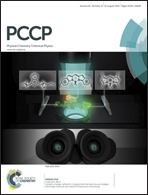An energetic evaluation of dissolution corrosion capabilities of liquid metals on iron surface
Abstract
Using first principles calculations, dissolution corrosion of liquid metals on iron surfaces has been investigated by calculating adsorption energies of metal atoms in the liquid phase on the surface and escape energies of surface Fe atoms. The adsorption energies, characterizing the stability of the adsorbed atoms on the investigated surfaces, show that Bi is more stable than Pb and Au. The escape energies, representing the energy required for an Fe atom to escape from the surface, show that adsorbed Pb makes surface Fe atoms escape more easily than Bi and Au. The combination of adsorption energy and escape energy indicates that the corrosion capabilities of liquid metals decrease in the order Bi > Pb > Au. This is further proved by the investigation of surface properties, such as inter-layer distance, magnetic momentum and charge density difference. The results are consistent with experimental results that Fe can be corroded more severely in Bi than in Pb. In the case of liquid alloys, chemical proportions of compositions are incorporated to evaluate the corrosion capabilities of Pb–Bi eutectic (LBE) and Pb–Au eutectic (LGE). It is found that LBE has more severe corrosion capability than LGE. The energetic calculation is further developed in evaluating the effect of alloying elements in popular steels on the dissolution corrosion. The results indicate that Si, V, Nb and Mo may mitigate the dissolution corrosion of martensite steels in liquid Pb, Bi and Au.


 Please wait while we load your content...
Please wait while we load your content...